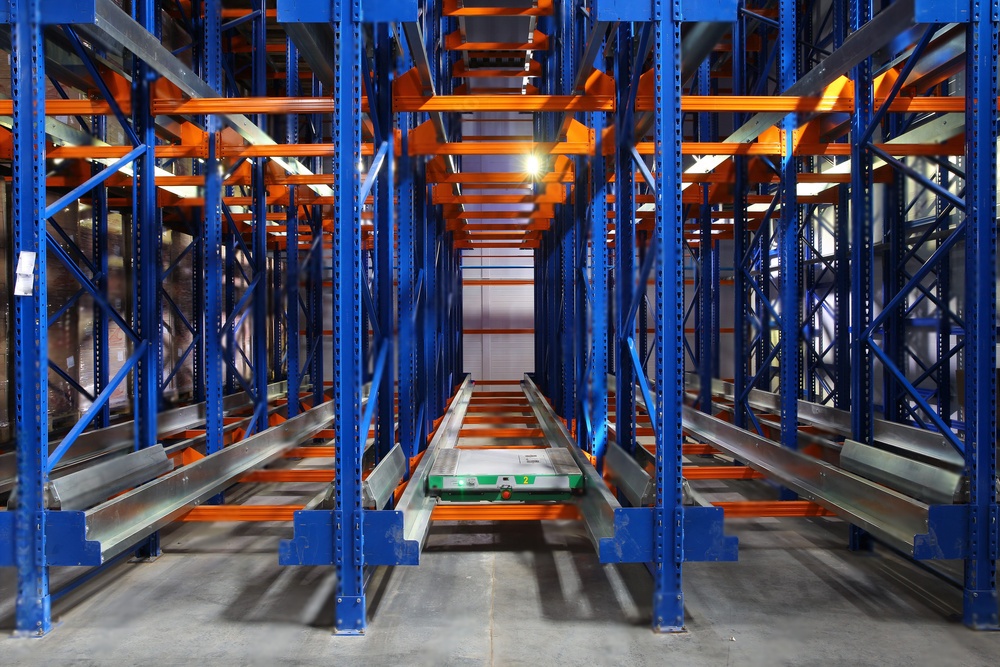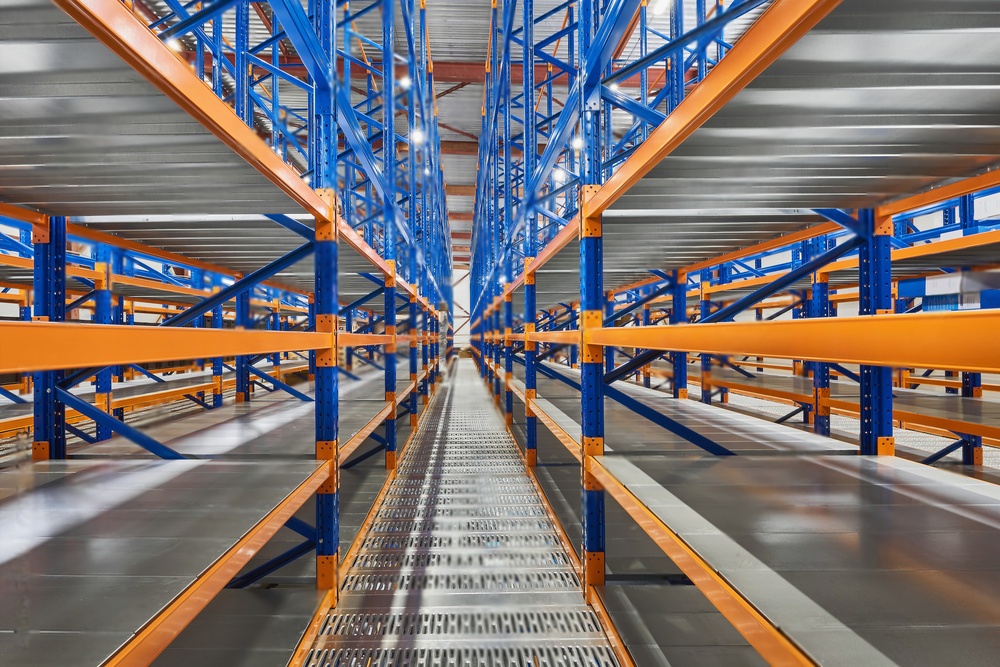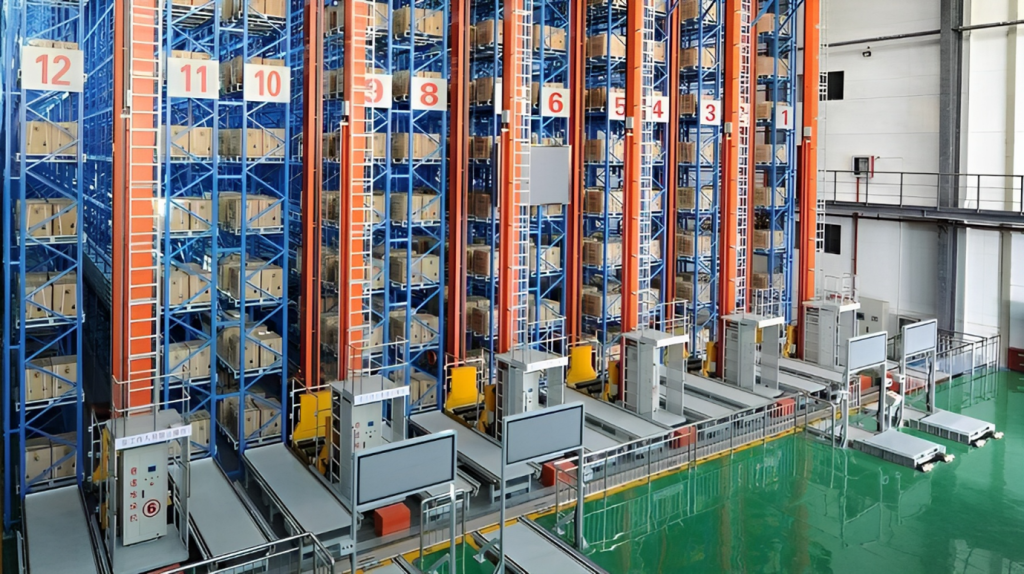The Real Cost of Automation vs. Manual
“I wish I had gone with a manual pallet storage system instead of automation.”
If this thought has crossed your mind, you’re not alone. Many warehouse managers in Malaysia have wondered the same. But are you sure? Automation sounded great, with its promises of efficiency and convenience, but is it really delivering more benefits than a manual pallet storage system would have?
In the fast-paced world of warehousing, the right pallet storage system is crucial for efficiency and profitability. For Malaysian warehouse managers, especially those working with e-commerce or logistics, the choice between an automated pallet storage system or a manual pallet racking setup can feel overwhelming. It’s not just about the upfront costs—it’s about long-term efficiency, productivity, and scalability.
So, how do you decide? Let’s break down the real costs, both short-term and long-term, of automation vs. manual pallet storage systems. By the end of this article, you’ll know exactly which option is best for your business.
What is a Pallet Storage System?
Before we dive into the numbers, let’s clarify what a pallet storage system is. A pallet storage system helps you store goods on pallets, using racks to maximize vertical space in your warehouse. These systems are essential for industries like e-commerce, logistics, manufacturing, and retail in Malaysia. Whether it’s inventory management or order fulfilment, a well-organized pallet storage system makes a big difference. Check types of Pallet Storage System here.
Why the Choice Between Automation and Manual Matters
So why is this decision so important? Here are three main reasons:
- Efficiency: Automated systems can cut retrieval times in half compared to manual ones, but manual setups offer flexibility, especially for small and mid-sized warehouses.
- Cost: Manual systems are cheaper to set up, but automated systems can save you thousands of ringgit (RM) in labour and operational costs over time.
- Scalability: Automated systems handle large inventories better. If you’re planning to grow, this could be key.
Let’s break down the numbers for both.


Manual Pallet Storage Systems: Cost Breakdown
Initial Setup Costs
One of the biggest advantages of a manual pallet storage system is its low upfront cost. Here’s a rough breakdown:
- Racking and Shelving: A standard selective racking system costs around RM 250 to RM 400 per pallet position, depending on the quality and supplier. This makes it accessible for small to medium-sized businesses.
- Forklifts: A decent forklift will set you back around RM 80,000 to RM 150,000 depending on the model and load capacity. You’ll need a few forklifts to keep up with the manual system.
- Labour: Manual systems require more manpower. For example, a warehouse with 10,000 pallet positions might need around 10 to 15 staff to manage day-to-day operations.
If you’re running a smaller warehouse with tight budgets, these lower setup costs are a big win. But the long-term costs? That’s a different story.
Long-Term Operating Costs
While it’s affordable to get started, manual systems can become costly in the long run, particularly in larger warehouses:
- Labour Costs: Manual setups require more workers, especially as your business grows. In Malaysia, a warehouse worker typically earns around RM 1,800 to RM 2,500 per month. Multiply that by the number of staff you need, and the costs start to add up quickly.
- Forklift Maintenance: Maintaining forklifts can cost anywhere between RM 15,000 to RM 20,000 per year for each machine.
- Operational Inefficiencies: Slower retrieval times (as much as 30% to 50% slower than automated systems) mean that overall productivity is lower, which can hurt profits, especially in high-turnover environments.
For a business that needs to scale or handle large volumes, these costs can balloon over time.
Automated Pallet Storage Systems: Cost Breakdown
Higher Initial Investment
There’s no sugarcoating it—automated pallet storage systems are pricey upfront. But that price comes with huge long-term benefits. Here’s a general breakdown of the initial costs:
- Automation Hardware: Robotic shuttles, conveyors, and automated guided vehicles (AGVs) can cost anywhere from RM 200,000 to RM 1,000,000, depending on the complexity of the system and the size of your warehouse.
- Software Costs: A top-tier warehouse management system (WMS) that integrates with automated machinery can cost between RM 50,000 to RM 150,000. This is a key component to making your automation work smoothly.
- Installation: Installation costs, including custom configuration, usually range from RM 100,000 to RM 300,000, depending on the level of customization needed.
For many, the sticker shock can be intimidating. However, the real benefit lies in long-term savings.
Long-Term Savings and Efficiency Gains
Here’s where automated systems really pay off:
- Reduced Labour Costs: You’ll need fewer workers to manage an automated system. For example, a warehouse with 10,000 pallet positions might only need 5 to 7 staff, cutting labour costs by as much as 50%.
- Higher Productivity: Automated systems can increase retrieval speed by up to 70%, meaning more orders processed in less time.
- Less Product Damage: The precision of robots reduces product damage by as much as 40%, saving you from losses.
- Energy Efficiency: Newer automated systems are more energy-efficient, potentially reducing electricity bills by 10% to 15% compared to older systems.
Even with maintenance costs (which could range between RM 20,000 to RM 50,000 per year for system updates and repairs), the long-term savings in labour, productivity, and operational efficiency often far outweigh the upfront costs.
ROI: Manual vs. Automated Pallet Storage Systems
Now let’s talk about the bottom line—ROI.
ROI for Manual Systems
- Fast ROI: With the low upfront investment, manual systems provide a faster ROI. You might recoup your investment in 1 to 2 years for smaller warehouses.
- Limited Scalability: As you grow, manual systems become less efficient, and the increasing labour costs cut into your profits.
- Labour-Heavy Costs: Over time, manual systems end up costing more in labour and slower operations, making them less attractive for high-growth businesses.
ROI for Automated Systems
- Long-Term ROI: Although the initial investment can take longer to recoup—typically 3 to 5 years—the long-term benefits are substantial.
- Scalability: Automated systems can handle growth much better, so if you’re expanding rapidly, the ROI can come faster than you think.
- Productivity Boost: With up to 70% faster retrieval times and a 40% reduction in errors, your overall profitability gets a serious boost over the long term.
Key Considerations for Malaysian Warehouses
Before making a decision, keep these points in mind:
- Warehouse Size and Turnover: If you run a small warehouse with slow-moving products, a manual system might be enough. But if you have high inventory turnover or are planning to scale, automation could be worth the investment.
- Labour Availability: In Malaysia, labour costs are relatively low, but finding skilled workers can be challenging. Automated systems reduce your dependency on a large workforce.
- Market Growth: With the rapid growth of e-commerce in Malaysia, having a scalable, efficient system could give your business a competitive edge.
Case Studies: Real-Life Examples from Malaysia
Case Study 1: A Small E-Commerce Warehouse in Selangor
A local e-commerce warehouse in Selangor opted for a manual pallet storage system because of its affordability. Initially, it was the right choice for their slower turnover. But as their business grew, labour costs increased, and retrieval times became a bottleneck. They are now planning to invest in automation to keep up with demand.
Case Study 2: A Large Logistics Company in Johor
A logistics giant in Johor implemented an automated pallet storage system to handle high-volume shipments. Despite an initial investment of RM 3 million, they recouped costs within four years through savings on labour, improved throughput, and reduced product damage. The company is now expanding without needing to significantly change its setup.
Final Thoughts: Which Pallet Storage System is Right for Your Malaysian Warehouse?
So, what’s the best fit for your warehouse?
- Manual systems are great for smaller warehouses or businesses with low inventory turnover, thanks to their lower initial costs.
- Automated systems are ideal for larger operations or businesses expecting growth, offering long-term savings and better efficiency despite the high upfront investment.
Not Sure Which Pallet Storage System? Get a Free Consultation with Hyperack
We’ll analyze your unique needs and help you find the solution that brings the best value to your business.
Explore our social media to see real-life projects in action.


